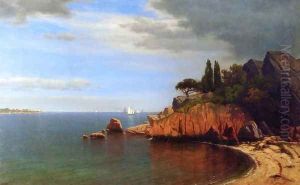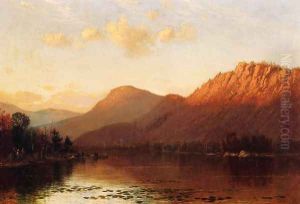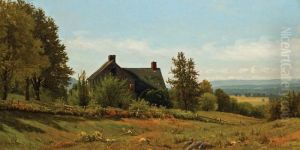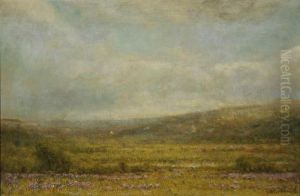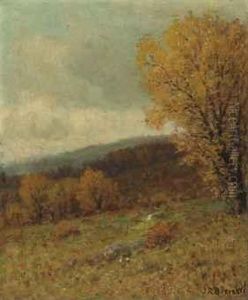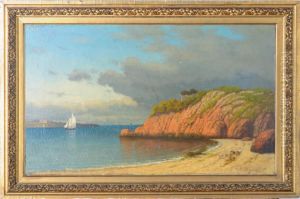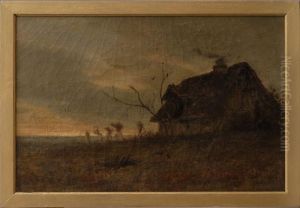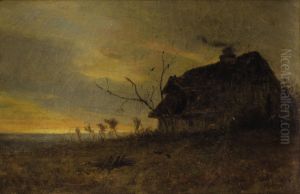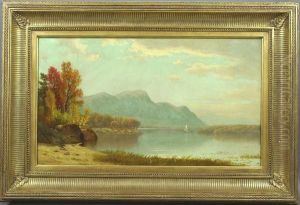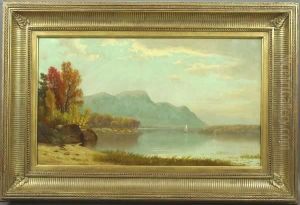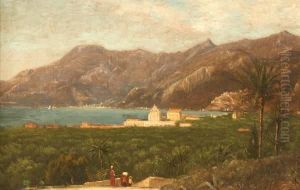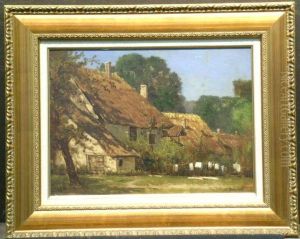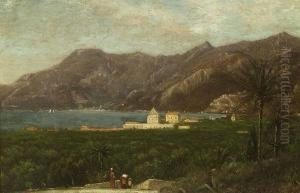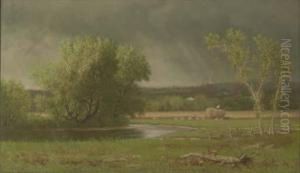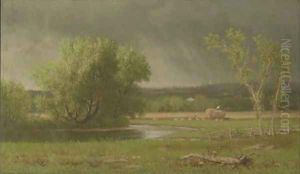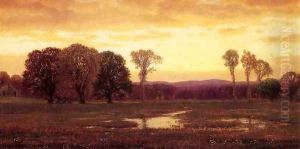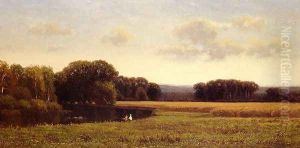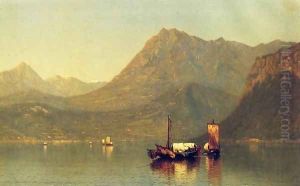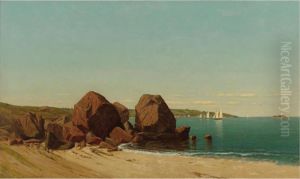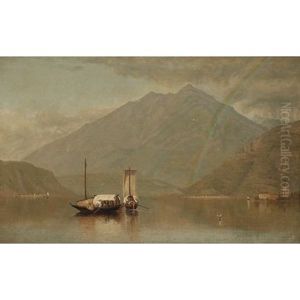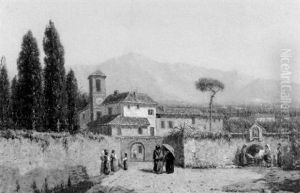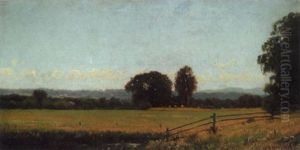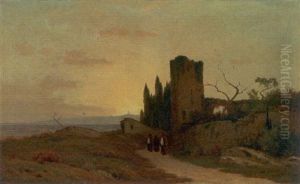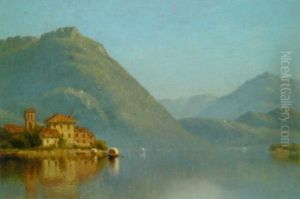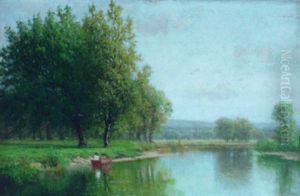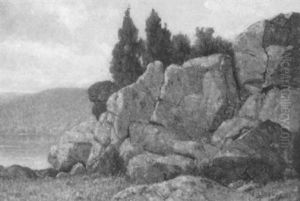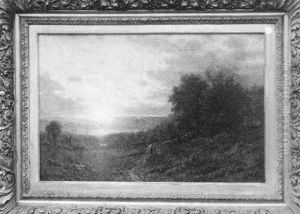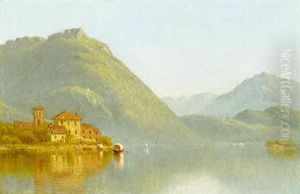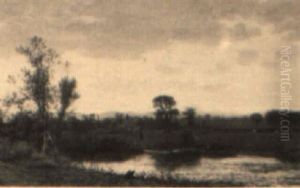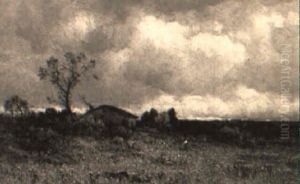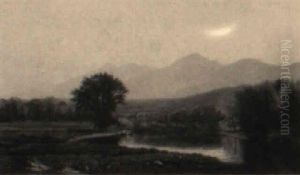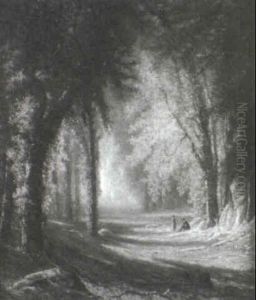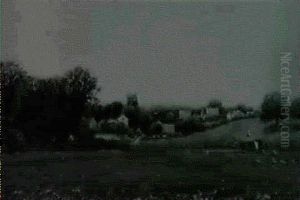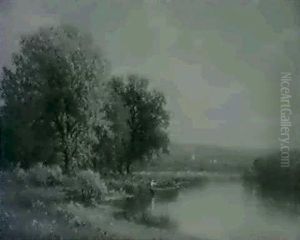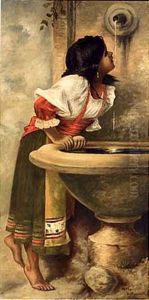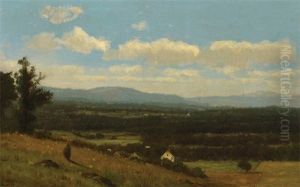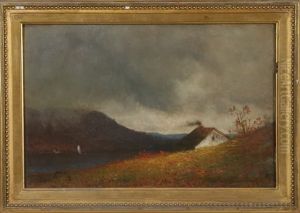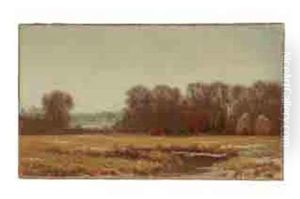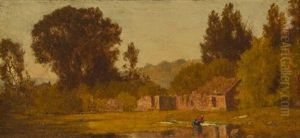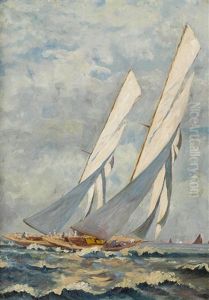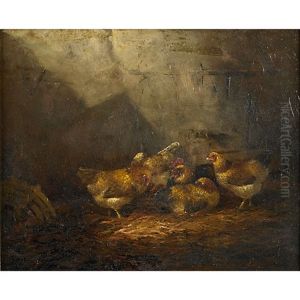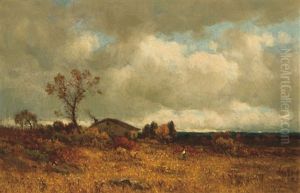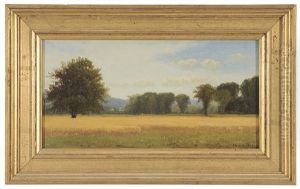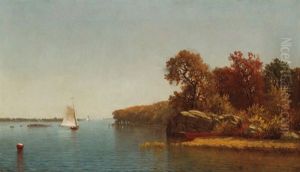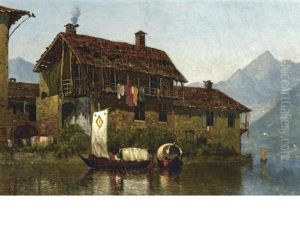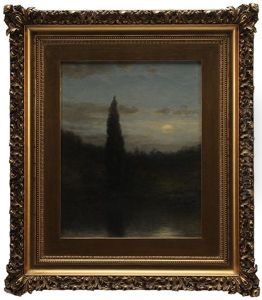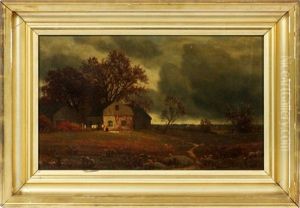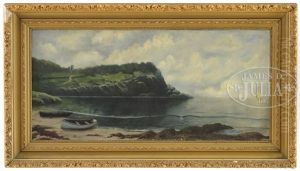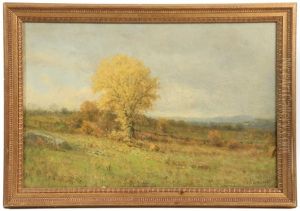James Renwick Brevoort Paintings
James Renwick Brevoort was an American landscape painter, influential in the second half of the 19th century and known for his realistic portrayals of the Hudson River Valley as well as his work in the Tonalism movement. He was born on July 18, 1832, in Yonkers, New York, to a well-established family that had historic roots in New York City. His middle name, 'Renwick,' was in honor of his uncle, the noted architect James Renwick Jr., who designed St. Patrick's Cathedral in New York City and the Smithsonian Institution Building in Washington, D.C.
Brevoort was primarily self-taught, although he did study briefly in Europe, which was common for American artists of his time to gain exposure to the Old Masters. His European travels brought him into contact with the work of the Barbizon School, which influenced the development of his painting style characterized by soft tones and an emphasis on the effects of light and atmosphere.
Upon returning to the United States, Brevoort established himself in the burgeoning art scene, becoming a member of the National Academy of Design in 1863 and later serving as its vice-president. He was also a member of the Century Association and the American Watercolor Society. His work was exhibited widely, including at the Paris Exposition of 1867 and the Centennial Exposition in Philadelphia in 1876.
In the 1870s and 1880s, Brevoort's style evolved as he became associated with Tonalism, an artistic style that emerged in America that emphasized mood and shadow. He created landscapes filled with subtle tones and a harmonious palette that reflected a sense of quiet and introspection. His Tonalist landscapes differed from his earlier, more detailed works, showing a preference for a muted color scheme and an overall sense of tranquility.
Brevoort's landscapes continued to gain recognition for their beauty and serene qualities. He often depicted the Hudson River and its surroundings, as well as scenes from his travels abroad. Despite the rise of more modern art movements in the late 19th and early 20th centuries, Brevoort remained committed to his style, which resonated with a public that appreciated his idyllic and pastoral scenes.
James Renwick Brevoort passed away on February 15, 1918, in Yonkers, New York. His legacy lives on through his contributions to American landscape painting, and his works are held in several prestigious collections, including the Metropolitan Museum of Art in New York and the Smithsonian American Art Museum in Washington, D.C.
